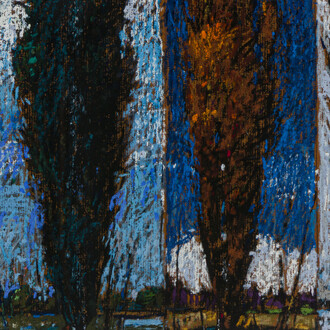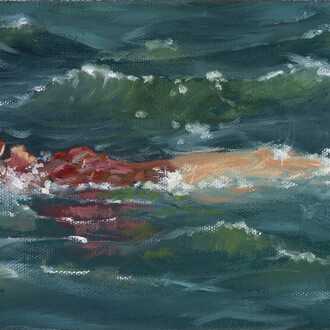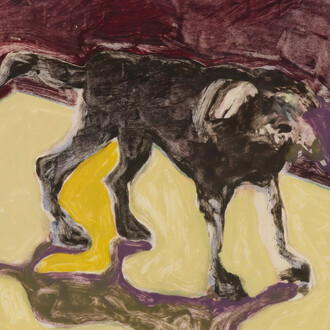American figural painter Elias Rivera (1937 – 2019) was best known for his striking body of canvases acclaimed for their visual eloquence in distilling the daily life of Indigenous communities in New Mexico, Guatemala, Mexico, and Peru.
These works are regarded for their intimacy, purity of vision, and ability to impart a majestic sense of intrinsic nobility and dignity of their human subjects. LewAllen Galleries is pleased to announce its first exhibition of Rivera’s work, From the Thread of Time, July 28 through August 22, 2023, as the exclusive representative of his estate. The opening reception will be held at the gallery on Friday, July 28, 5 – 7 p.m. and attended by Elias’s wife, Susan Contreras. Marimbist Steve Chavez will offer a live performance at the event.
Rivera’s unique facility with bold and bright color, minimal composition and a powerful, fresh focus on the primacy of the individuals portrayed, produces works that some critics have described as “frieze-like.” His work is renowned for its capacity to capture the colorful garments and ancestral rituals and markets, presenting the ordinary as extraordinary through a clarity of light and color.
Rivera’s artistic sensibility has been distinguished from most contemporary artists and often likened to Renaissance and Old Master painters such as Vermeer, Rembrandt, Caravaggio, and Veronese. Part of this comparison results from Rivera’s use of an unusual painting medium, maroger, thought to have been used during the Renaissance, but largely lost until its rediscovery in the 1940s. Rivera employed it to produce the glowing and highly finished surface qualities distinctively associated with his works. Also like the Venetian masters, Titian and Tintoretto, Rivera was a genius of the colorito technique, using the juxtaposition of colors to define a composition rather than with lines.
Born in Bronx, NY, Elias Rivera attended the School of Industrial Arts from 1953 to 1954, and then the Art Students League of New York from 1955 to 1961, where he studied with and was mentored by artist Frank Mason. For years, he painted life on the streets of New York—people in bars, subways, airports and automats—and developed a keen power of observation. The darker, monochromatic aspect of Rivera’s paintings during this period has a fascinating Dostoevskian quality but contrasts dramatically in mood, size, and content with the later panoramas of color and warmth focused on Indigenous people created after he moved to New Mexico. Works from this period of Rivera’s career are also included in this exhibition.
Rivera moved to Santa Fe, New Mexico, in 1982, where he met his future wife, artist Susan Contreras, and lived and worked throughout the rest of his life. He received the Governor’s Award for Excellence in the Arts in 2004. A major monograph entitled Elias Rivera was published in 2006 with an essay by well-known art critic and writer Edward Lucie-Smith. Following a tragic car accident in 2011, Rivera stopped working in 2015 and passed away in 2019 in Santa Fe.















